Heat recovery in the agricultural sector
Heat recovery
Discover the benefits of heat recovery in the agricultural sector with Kleventa. As a leading supplier of technical solutions, we understand the needs of livestock farming businesses and offer advanced heat recovery systems that contribute to energy efficiency and environmental friendliness.
Our heat recovery technologies enable livestock farms to reuse valuable residual heat that would otherwise be lost in various agricultural processes. With our advanced heat exchangers, heat pumps, and thermal storage systems, this residual heat can be captured and converted into usable energy for other business purposes.
By applying heat recovery, livestock farms can not only reduce their energy consumption, but also significantly reduce their CO₂ emissions. This leads to long-term cost savings and a positive impact on the environment. In addition, our systems ensure accurate temperature control, which contributes to a comfortable and healthy climate for the animals.
Heat recovery | Our products
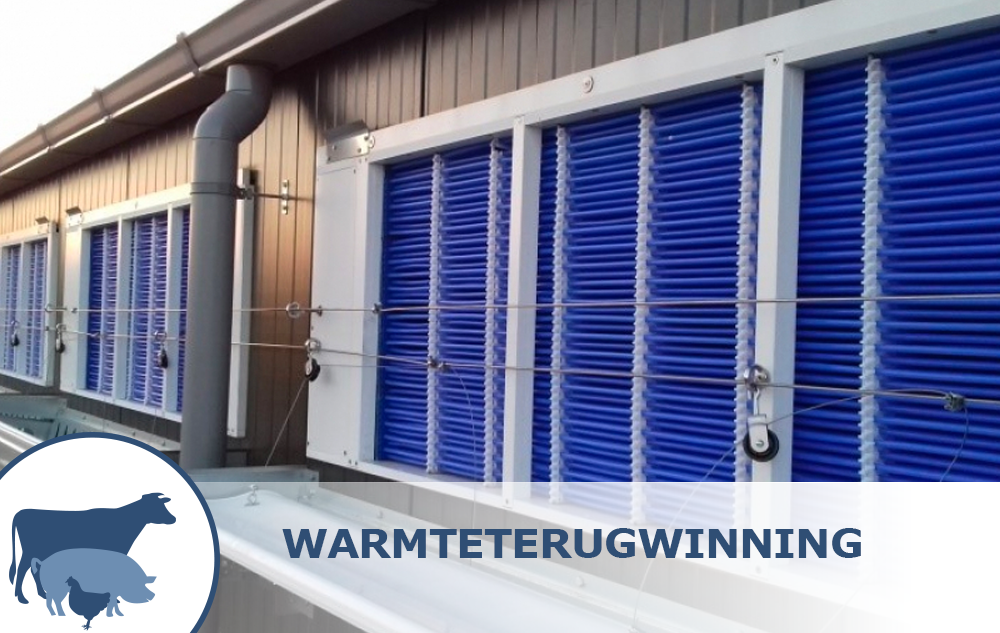 Warmteterugwinning
Warmteterugwinning
Thanks to the anti-fouling and corrosion-resistant properties of this heat exchanger, it delivers significant energy recovery and savings in the long term.
Our team of experts is ready to assist you in selecting and implementing the right heat recovery system for your business.
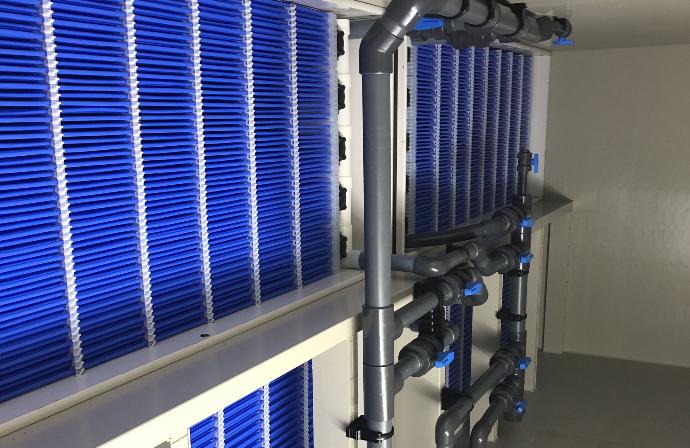
AeroX heat exchanger
This heat exchanger is used to pre-condition the incoming air. Changing animal welfare standards and the reduction in antibiotic use place high demands on the living environment in the barn. From a business perspective, it is also important to minimize risks such as drafts and heat stress.
The AeroX heats or cools the incoming air, thereby mitigating the extremes of the outdoor climate. This results in an optimal barn climate.
The energy for this water-air heat exchanger is supplied by an external energy source (such as a groundwater source or surface water) or is recovered from residual heat from extracted barn air or a biogas installation.
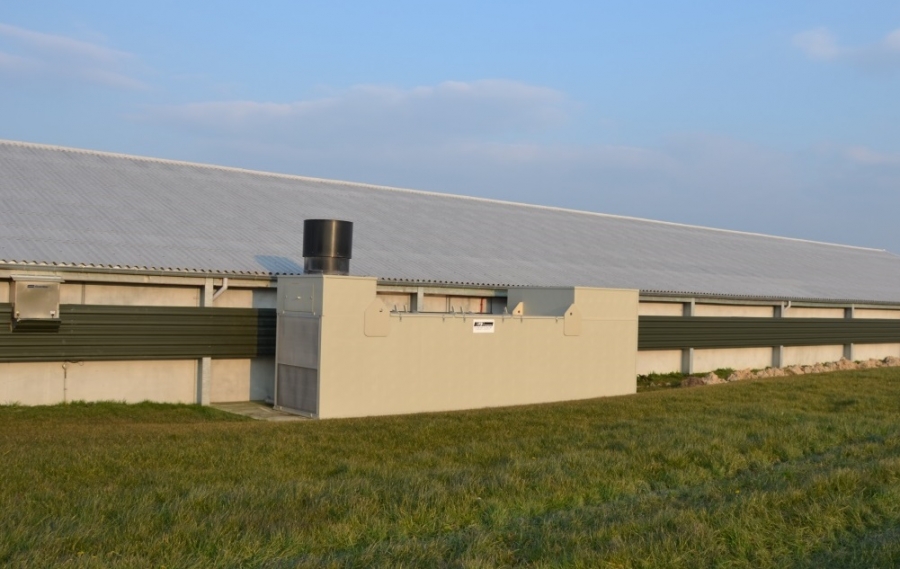
AIR2-DS Heat Exchanger
Using a heat exchanger results in improved growth, reduced use of medication, lower mortality rates, and a better working and living environment. Heat exchangers utilize the heat from outgoing air to warm the incoming air, without mixing the airflows. The AIR2-DS heat exchanger can achieve a thermal efficiency of up to 80%. This high efficiency is made possible by the extra-long fins in the exchanger. As a result, energy consumption in the barn can be reduced by up to 60%. Thanks to the even distribution of air in the barn, with minimal drafts, the animals spread more evenly throughout the space. This leads to more calmness and less stress among the animals.
 PolyCoil Heat Exchanger
PolyCoil Heat Exchanger
The PolyCoil heat exchanger is a revolutionary plastic heat exchanger, developed after years of research. PolyCoil heat exchangers combine high energy transfer with a lightweight construction and flexible installation options. Thanks to their fully plastic construction, the heat exchangers are dirt-repellent, impact-resistant, and completely corrosion-resistant. Dirt hardly sticks to the system and can be easily removed with water.

The PolyCoil heat exchanger is constructed from special thin-walled nylon tubes, which offer heat/cold transfer comparable to that of conventional aluminum systems. Unlike aluminum systems, which lose more than 10% of their efficiency within a few months due to corrosion and contamination, the PolyCoil retains its efficiency for years.
Thanks to the anti-fouling and corrosion-resistant properties of this heat exchanger, it delivers significant energy recovery and savings in the long term.
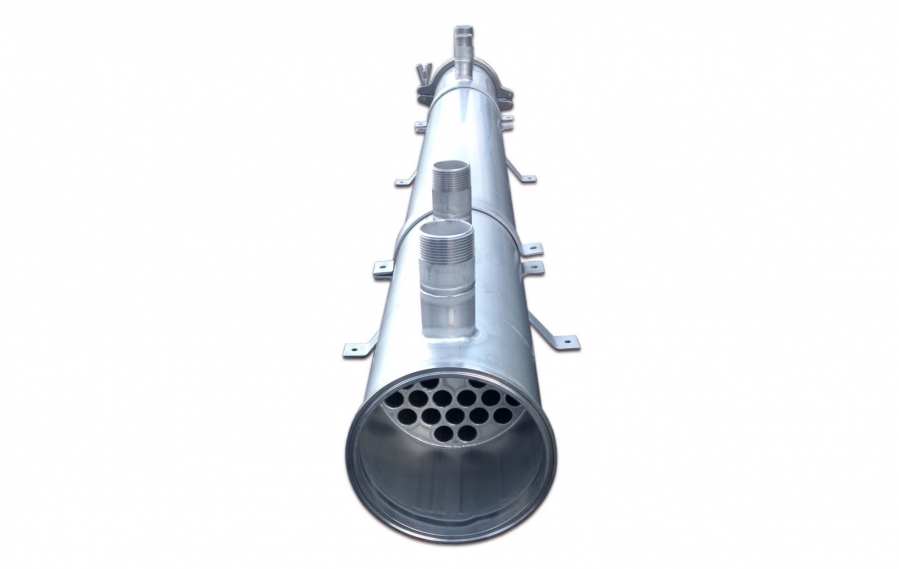 Stainless Steel Tube Heat Exchanger
Stainless Steel Tube Heat Exchanger
For transferring heat between two separate water flows, both plate and tube heat exchangers can be used. While plate heat exchangers offer good efficiency, they are less suitable for industrial environments with contaminated water. In such applications, tube heat exchangers are the better solution.
Operation:
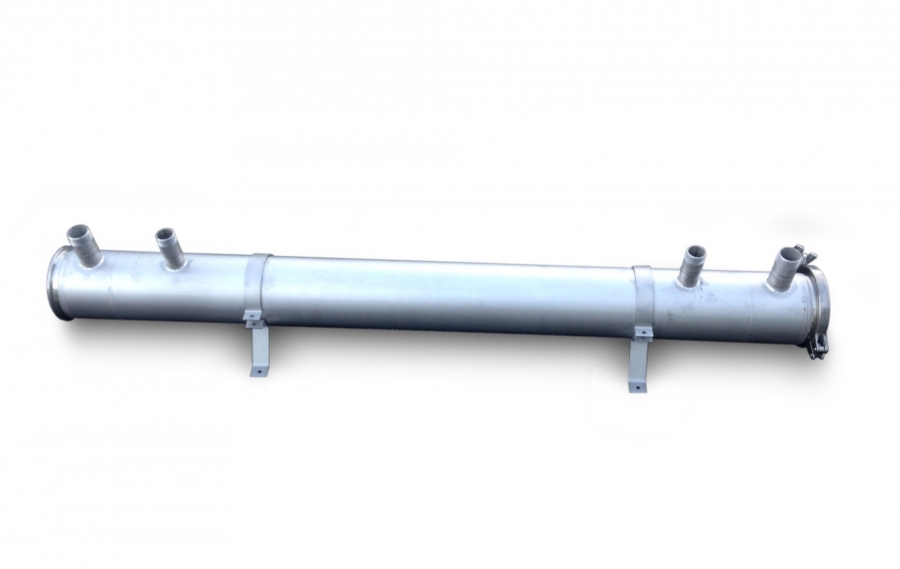 The stainless steel tube heat exchangers consist of a large number of small stainless steel tubes placed inside a larger outer tube. The contaminated medium (such as rinse water) flows through the inside of the smaller tubes, while clean water flows along the outside of these tubes. By connecting the water flows in a counterflow configuration, maximum heat transfer is achieved.
The stainless steel tube heat exchangers consist of a large number of small stainless steel tubes placed inside a larger outer tube. The contaminated medium (such as rinse water) flows through the inside of the smaller tubes, while clean water flows along the outside of these tubes. By connecting the water flows in a counterflow configuration, maximum heat transfer is achieved.
Cleaning:
For easy and effective cleaning, the ends of the heat exchanger are equipped with removable covers. This makes the interior of the tubes easily accessible for cleaning operations.